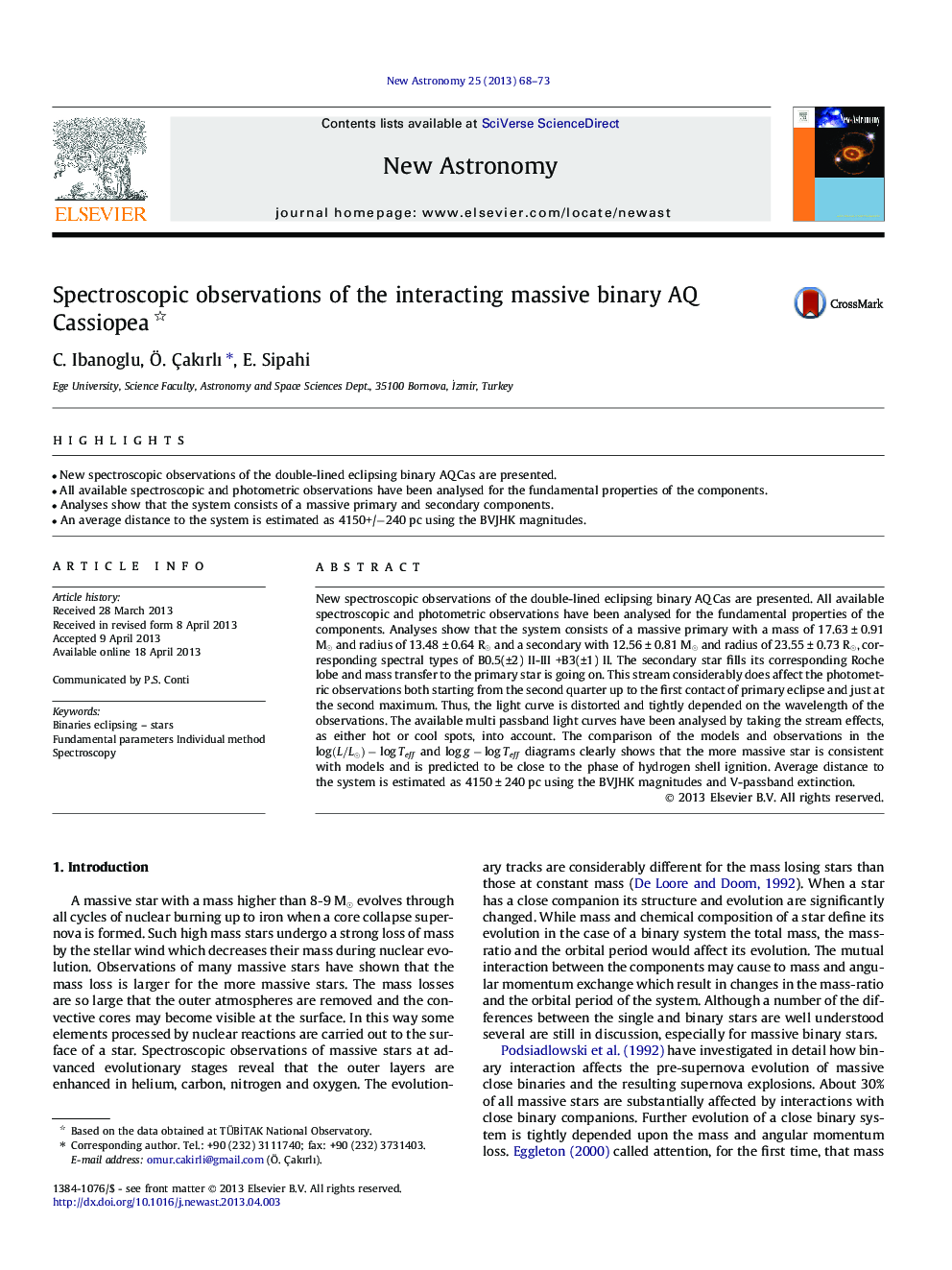| Article ID | Journal | Published Year | Pages | File Type |
|---|---|---|---|---|
| 1779033 | New Astronomy | 2013 | 6 Pages |
Abstract
New spectroscopic observations of the double-lined eclipsing binary AQ Cas are presented. All available spectroscopic and photometric observations have been analysed for the fundamental properties of the components. Analyses show that the system consists of a massive primary with a mass of 17.63 ± 0.91 Mâ and radius of 13.48 ± 0.64 Râ and a secondary with 12.56 ± 0.81 Mâ and radius of 23.55 ± 0.73 Râ, corresponding spectral types of B0.5(±2) II-III +B3(±1) II. The secondary star fills its corresponding Roche lobe and mass transfer to the primary star is going on. This stream considerably does affect the photometric observations both starting from the second quarter up to the first contact of primary eclipse and just at the second maximum. Thus, the light curve is distorted and tightly depended on the wavelength of the observations. The available multi passband light curves have been analysed by taking the stream effects, as either hot or cool spots, into account. The comparison of the models and observations in the log(L/Lâ) â logTeff and logg-logTeff diagrams clearly shows that the more massive star is consistent with models and is predicted to be close to the phase of hydrogen shell ignition. Average distance to the system is estimated as 4150 ± 240 pc using the BVJHK magnitudes and V-passband extinction.
Keywords
Related Topics
Physical Sciences and Engineering
Physics and Astronomy
Astronomy and Astrophysics
Authors
C. Ibanoglu, Ã. Ãakırlı, E. Sipahi,
